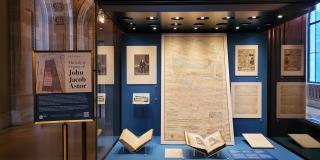The first American millionaire and, at his death, one of the richest men in the world, John Jacob Astor (1763–1848) arrived in New York City in 1784, less than a year after British troops evacuated the war-torn city following the end of the American Revolution. He lost no time in making his way. As character and author, agent and principal, he was immersed in the cultural churn that transformed the United States in its early years. The transition from an agrarian to a market economy, the rise of global commerce, and the eclipse of a republican ethos by an emergent liberalism roiled the young nation. Astor stood at the center of those storms. Although he believed that money had no country, he knew that his interests were inseparable from the ebb and flow of national policy. He and the young nation were engaged in overlapping course corrections; both tacked ceaselessly between uncertain contingencies.
Astor’s story is one of continual transformation. Though he began his career in the fur trade, his business interests came to encompass the tea and silk trades and, later, Manhattan real estate. The profits from his real-estate enterprises became generational wealth; wealth translated into luxury on the one hand and philanthropy on the other. Along the way, the youngest son of the second butcher of Walldorf, Germany, became a financial titan.
This display is organized by The New York Public Library and curated by Ian Fowler, Curator of Maps, History, and Government Information, and William P. Kelly, former Andrew W. Mellon Director of the Research Libraries.








